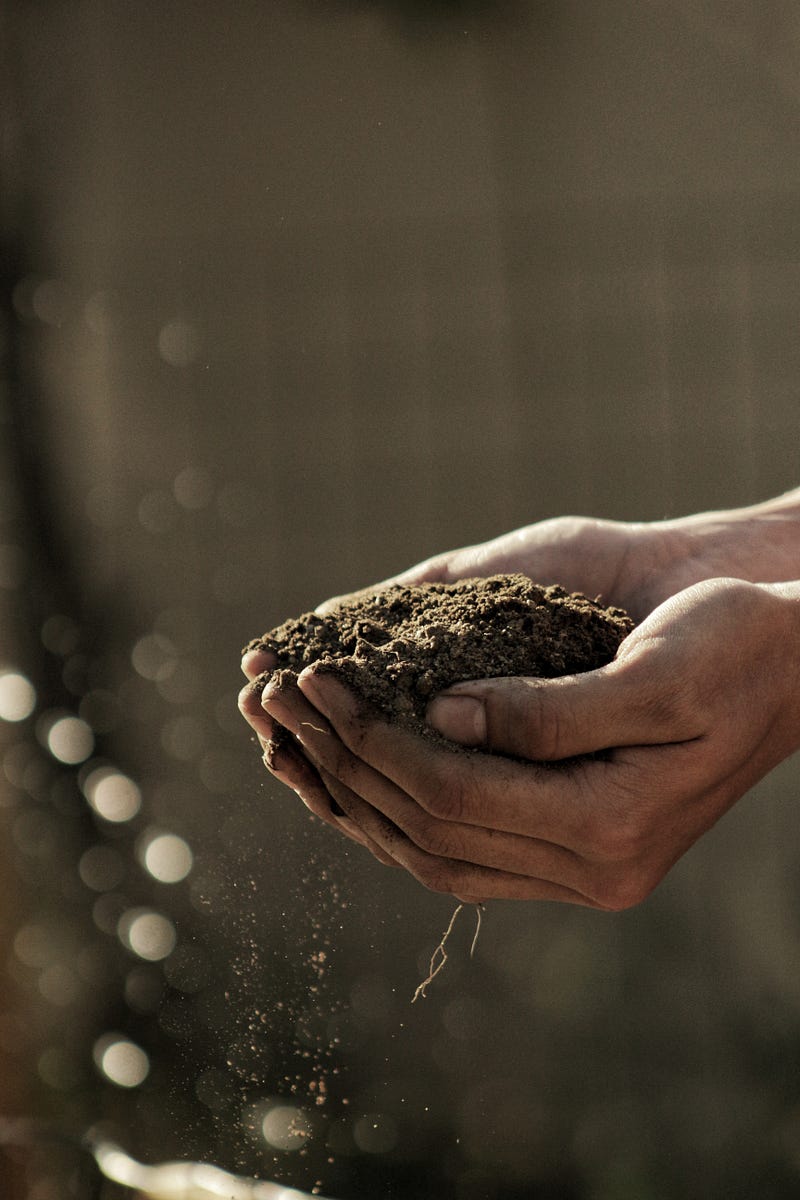8 Ways Hemp Can Save The World
Hemp is the most powerful plant ally we have to live sustainably on this planet…
Take a moment to visualize something with me.
Picture a vast sea of bright green plants as far as the eye can see. You can practically feel the rich soil they’re growing out of and you can hear the birds happily chirping as they fly overhead.
The sun is setting, and off in the distance you can see someone driving a tractor, harvesting a section of the crop and moving it to where it will be processed. Zooming out a bit from the field and you can see solar-powered factories with these bright green plants entering on one side. Out the other side are an incredible new generation of bio-plastics, biofuels, health products, and more.
Zoom out even further from the agrarian utopia and you happen to notice that the forests are thriving, the waters are clean, and the stream of waste heading to sit in a landfill for eternity has slowed down significantly. It’s a wondrous sight that gives hope for the future of humanity and hope for the abundant Earth from which we emerged and will eventually return to.
Hemp is the single most useful plant on the planet.
It can help us achieve sustainability and even move beyond to regeneration. We need to adopt hemp more than it needs us, and the more people know about how versatile hemp truly is, the better.
This blog post should help clear the air about hemp (low-THC cannabis) and lay out why we need it more than ever. Benefits go far beyond what cannabinoids such as CBD have to offer. Hemp has the ability to feed, clothe, house, and heal us and the earth. It also has vast technical and industrial applications — of which we’re only beginning to scratch the surface of.
Let’s take a closer look at the 8 ways hemp can save the world…
1. HEALTH
Cannabinoids are compounds that have profound effects on the body and help us achieve homeostasis. The increasingly popular hemp-derived cannabinoid known as CBD is non-intoxicating and has profound positive health effects on all mammals.

Cannabinoids are mainly found in two places in nature — in animals and in the cannabis plant. That’s right, we produce our own cannabinoids (known as endocannabinoids) that interact with the same network of receptors and chemical pathways that the plant-derived cannabinoids (know as phytocannabinoids) do. This system is known as the endocannabinoid system, and a rapidly growing body of research suggests that this system is essential for the effective functioning of our nervous and immune systems.
All signs point towards cannabinoids and the endocannabinoid system launching a whole new era of scientific research and plant-based medicines. One of the leading cannabinoid researchers, Dr. Ethan Russo, even suggests that many common medical conditions are, in fact, cannabinoid-deficiency diseases. That would definitely explain why medical cannabis is life-changing for so many people.
Fun Fact: Hemp can be grown for high-CBD content, providing you with nearly all the medicinal benefits without any of the ‘high’ associated with THC-heavy variations of cannabis.
2. FOOD
While cannabinoids are mainly derived from hemp leaves and buds, hemp seeds are completely packed with nutrition. These humble seeds are one of the best sources of vegetarian protein on the planet and contain a perfectly balanced ratio of omegas 3 and 6. Even better than fish oil.
The most common forms that hemp foods come in are hemp hearts (which is the meaty inside of the seed), hemp seed oil (which is pressed out of the seeds), hemp flour (which is ground hemp seed), and hemp milk (which is hemp hearts blended with water). Hemp food products are already available at mainstream food stores around the country and globally. They’re such a powerful food source that you can literally survive by eating hemp seeds and nothing else.
Hemp foods are not just for us! Animals absolutely love to eat hemp and will happily chomp down on freshly plucked leaves. Hemp provides just as many nutritional benefits for animals as it does for us.
Fun Fact: some people believe that we used to passively absorb cannabinoids from eating livestock that grew up on a diet of hemp.

3. FIBER
Fiber is probably the oldest recorded use case for hemp and played a pivotal role in the history of America. Hemp fiber is derived from the stalk of the plant and is extremely strong, long lasting, and can be used in a huge range of applications. One of the most important uses of hemp fiber is for replacing tree-based paper products. Hemp paper is, as expected, more durable and higher-quality than tree paper. And hemp only takes 3.5 months to grow to maturity! The founding fathers of the United States chose hemp paper to draft the Declaration of Independence on exactly for that reason.
Hemp fiber can also be used to make rope, sails, and clothing — all of which are incredibly durable and have natural antifungal and antimicrobial properties. Hemp lasts far longer than cotton and is much more sustainable to cultivate. The fiber was the main reason hemp was cultivated back in the beginnings of the US. In fact, there was a point in history in which it was illegal not to grow hemp because they needed the fiber for rope on their military ships.
Fun Fact: the oldest recorded use case of hemp for Fiber goes back more than 3000 years ago to ancient China. It’s been pretty much continually used since then.
4. BUILDING MATERIAL
Hemp is an absolutely incredible building material. The hemp hurd (part of the stalk) is combined with water and lime to make hempcrete — similar to concrete but with several clear advantages. First off, it’s actually stronger than concrete. It’s also completely non-toxic and has natural anti-fungal and antimicrobial properties. It’s also entirely fire-resistant!
A very fascinating result of making hempcrete is that once set, the mixture pulls-in carbon from the atmosphere over years as it matures and hardens into rock. Through this process it also remains breathable. So basically, building a house out of hempcrete sequesters carbon over time while keeping the internal environment much healthier and cleaner than any modern building technique.
Even if you are building with more traditional materials, you can use hemp fiber as insulation in your walls. Instead of using toxic pink fiberglass filler or foam, you can use a natural plant fiber that has strong thermal properties is also mold-resistant. It’s better for you, the environment, and any of your loved ones that the hempcrete structure is providing shelter for.

Fun Fact: hemp plaster was even used 1,500 years ago in structures that are still incredibly preserved today.
5. BIOREMEDIATION
It’s no secret that we humans have wreaked havoc on our environment since the dawn of the industrial age. Luckily, hemp has powerful bioremediation properties and can reverse much of the damage we have done. It’s a powerful bioaccumulator, which means that it can pull up toxins from our soils.
In only a few growing seasons, hemp can remove the toxic pesticides, herbicides, and heavy metals from our agricultural soils. As Franklin Delano Roosevelt once said, “The nation that destroys its soil, destroys itself.” Hemp is one of the best tools we have at our disposal to stop the loss of our valuable topsoil while simultaneously cleaning up the massive mess we’ve made through the reckless practices of industrial agriculture and the mishandling of industrial chemical byproducts.
Fun Fact: Hemp can also absorb radiation! Hemp was successfully planted in some areas around the Fukushima nuclear reactor in Japan to absorb the radiation that was leaked out into the environment.

6. BIOFUEL
That’s right, hemp can be refined into a biofuel that can power all of our vehicles. Instead of extracting ancient carbon deposits from inside the earth, we can be growing our fuel effectively and sustainably. Hemp is also a much better option for biofuel production that GMO and pesticide-heavy crops like corn. There’s no need to dive deep into the massive disruption that hemp-fuel would cause. We are all well aware of the destruction fossil fuels have caused at this point.
Fun Fact: the original Model T Ford was made designed to run on hemp fuel!
7. PLASTICS
Hemp can be successfully refined into plastic products. We’re only now beginning to realize how destructive our global plastic habit has become. Nearly all plastics we use currently will never break down in nature and are made from oil-based toxic compounds. Micro-plastics are also a new threat, endangering sea life and animals all over the world. Instead of all that, we can switch over to using hemp plastic — a completely non-toxic and biodegradable alternative. Sana Packaging is a great new company making hemp-plastic packaging solutions for the cannabis industry.
Fun Fact: the original Model T Ford also had a hemp-body!
8. TECHNOLOGY
Last, hemp is being explored for applications in high-technology. Hemp carbon is, of course, very high quality and has the potential for use in computer chips and superconductors. Graphene — a super cool future-material made of a single layer of carbon atoms — has been successfully created with hemp and outperformed many other source materials. So much of the technology we rely on today contains components which leave a trail of destruction in their wake — from initial mineral extraction to processing and eventual disposal. Hemp has the potential to replace some of these electronic components. Time to grow our technology!
Fun Fact: people are even starting to 3-D print with hemp plastic.
As you can now hopefully see, hemp has the ability to positively impact nearly every aspect of our everyday lives and can bring much-needed disruption to many aspects of our industrialized world. It’s an incredibly resilient plant and — regardless of the reason for which it is grown — will help to sequester carbon and improve our soils. It grows to maturity in only a few months, is naturally resistant to pests, and needs only ⅓ of the water that cotton demands.
When it comes down to it, it’s not a matter of if hemp can save the world, it’s a matter of how quickly we can adopt this plant and adapt it to our industrial needs. Hemp was here before us, and it will likely be here after us. We need an entirely new eco-industrial revolution to occur in order to protect our species and the health of the planet we’re intimately connected with. Hemp will undoubtedly be a key player in any regeneration effort.
To purchase hemp-derived CBD products or learn more, visit our websitewww.UnCannyWellness.com


